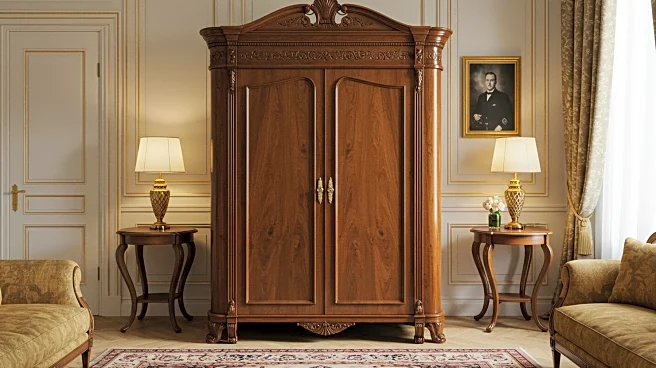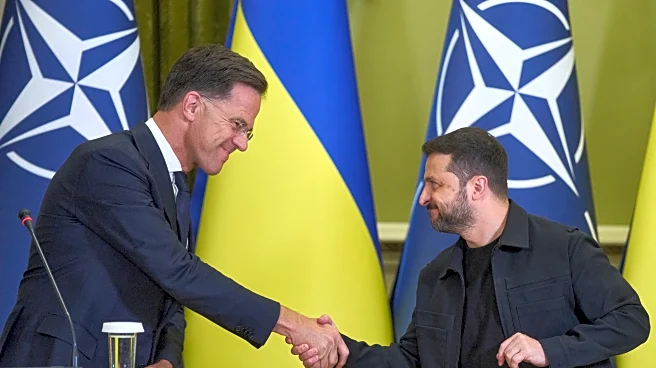What's Happening?
During a recent meeting at the Oval Office, President Trump criticized Ukrainian President Volodymyr Zelenskyy for his choice of attire. Zelenskyy, who previously wore a black Henley shirt during a February visit, opted for a black canvas blazer over a black collared shirt for this meeting, still without a tie. The change in wardrobe was noted by a reporter who had previously criticized Zelenskyy's attire, prompting President Trump to comment on social media that Zelenskyy disrespected the United States by not wearing a suit. The meeting highlighted the ongoing scrutiny of political figures' attire and its perceived implications.
Why It's Important?
The focus on President Zelenskyy's wardrobe underscores the symbolic power of clothing in diplomatic settings. Attire can convey respect, seriousness, and intent, influencing perceptions and interactions at high-level meetings. This incident reflects broader societal expectations and the pressure on political figures to adhere to traditional norms. The scrutiny of Zelenskyy's clothing choice may impact diplomatic relations and public perception, emphasizing the role of image in international politics.
What's Next?
Future meetings between President Trump and President Zelenskyy may continue to be influenced by wardrobe choices, potentially affecting diplomatic dynamics. The emphasis on attire could lead to discussions on the importance of image in diplomacy and whether traditional norms should evolve. Stakeholders may react by reassessing the significance of clothing in political contexts, potentially influencing future diplomatic protocols.
Beyond the Headlines
The incident raises questions about the intersection of fashion and politics, highlighting how clothing can serve as a form of communication. It prompts a reevaluation of cultural expectations and the role of personal expression in political settings. The focus on Zelenskyy's attire may lead to broader discussions on the impact of image and presentation in shaping diplomatic relationships.












